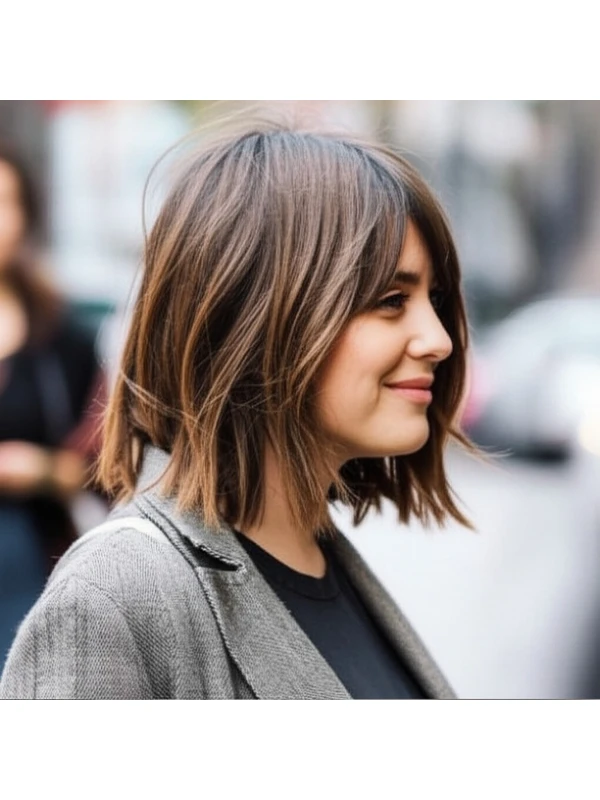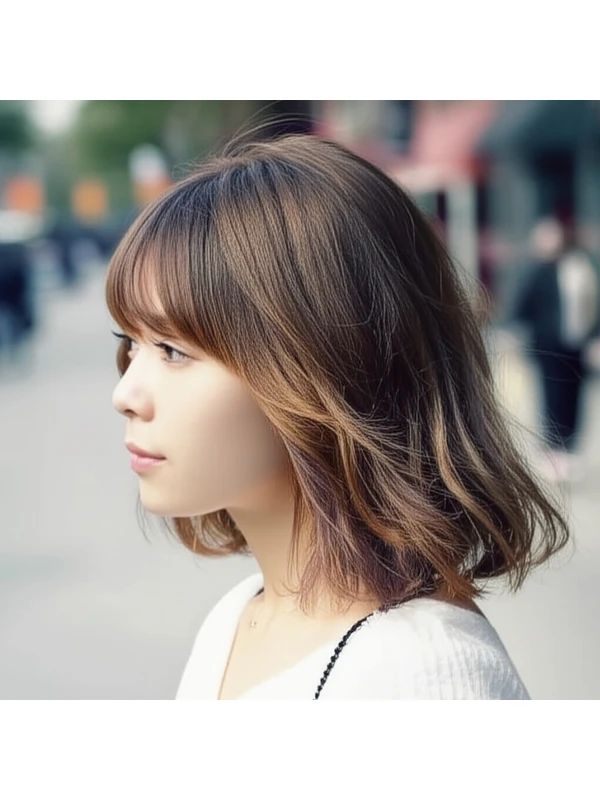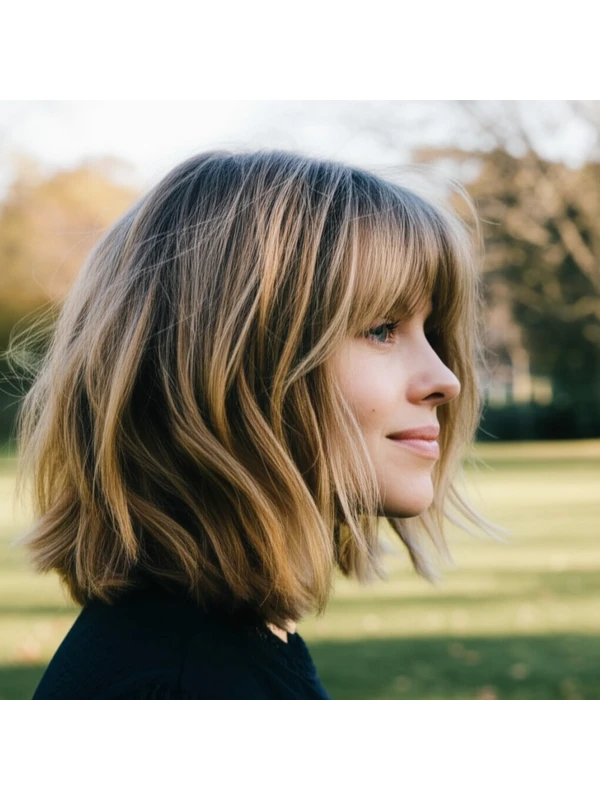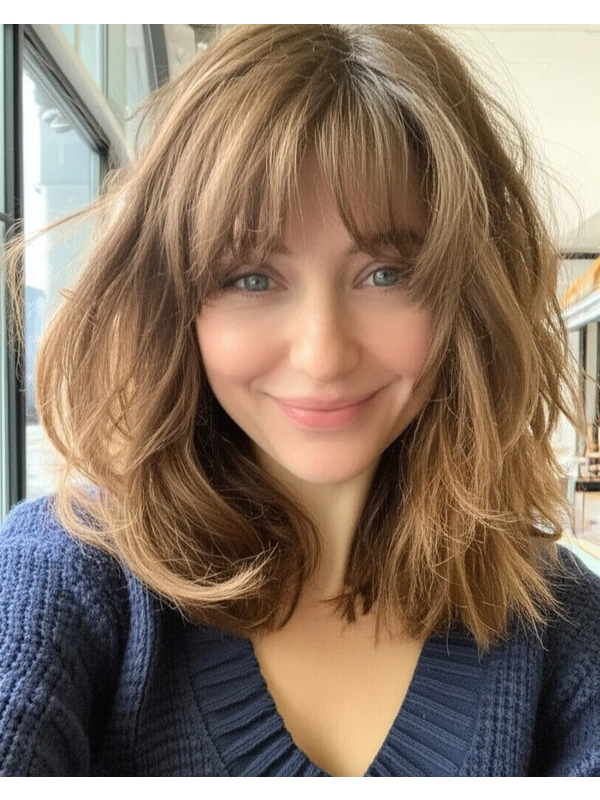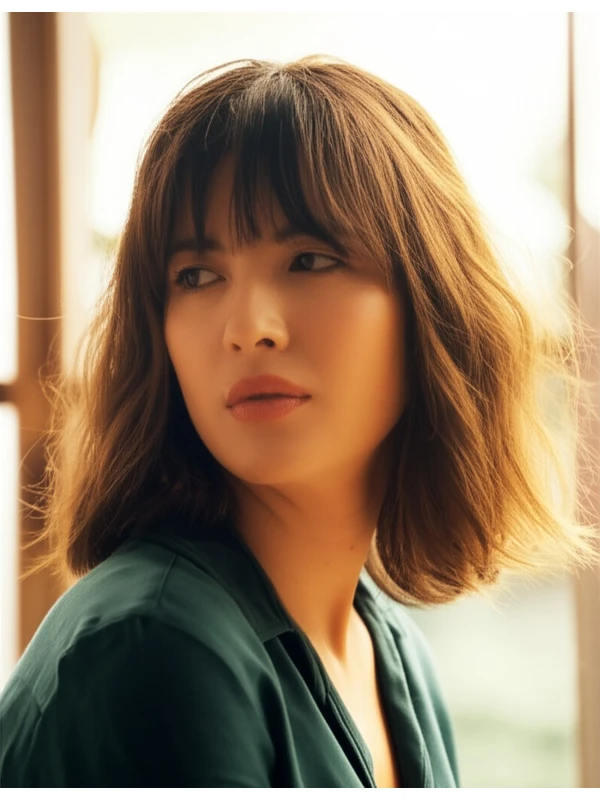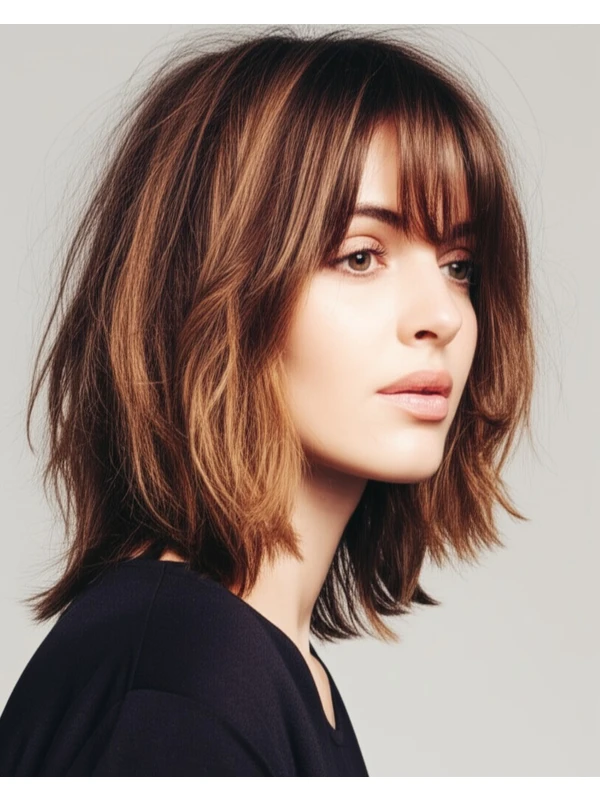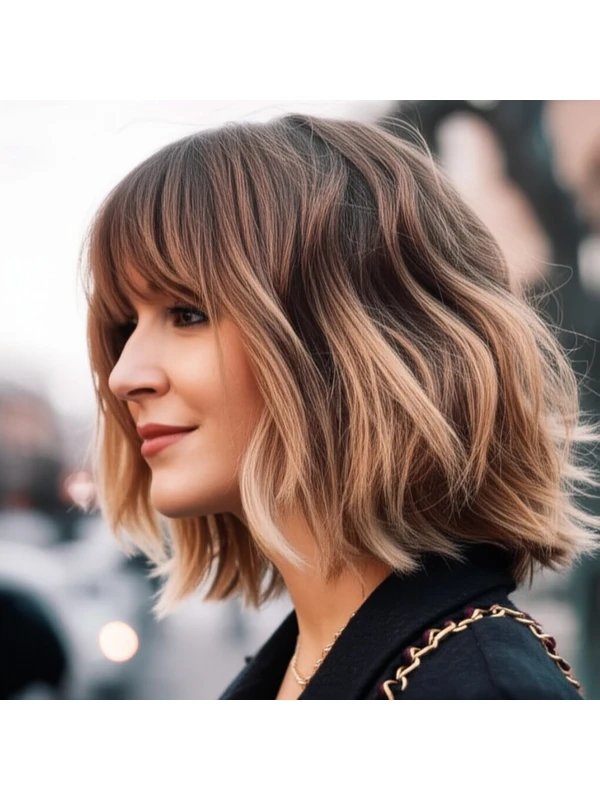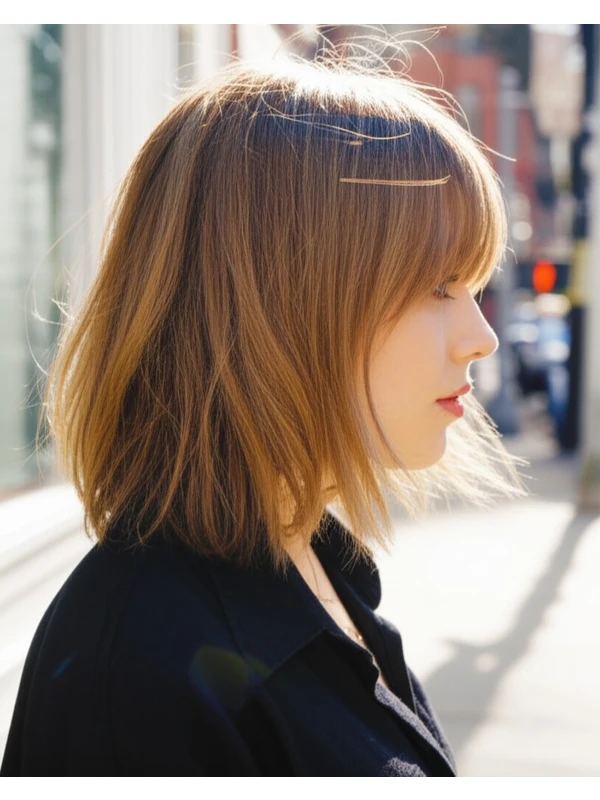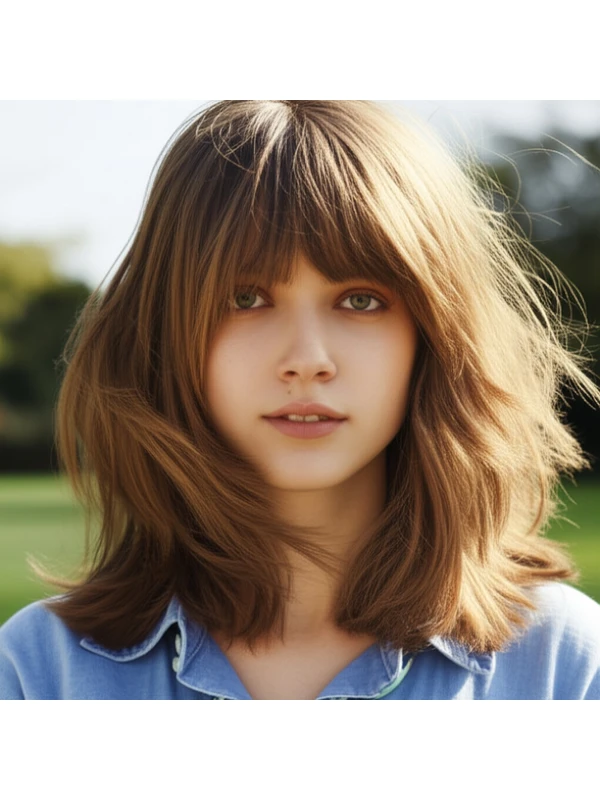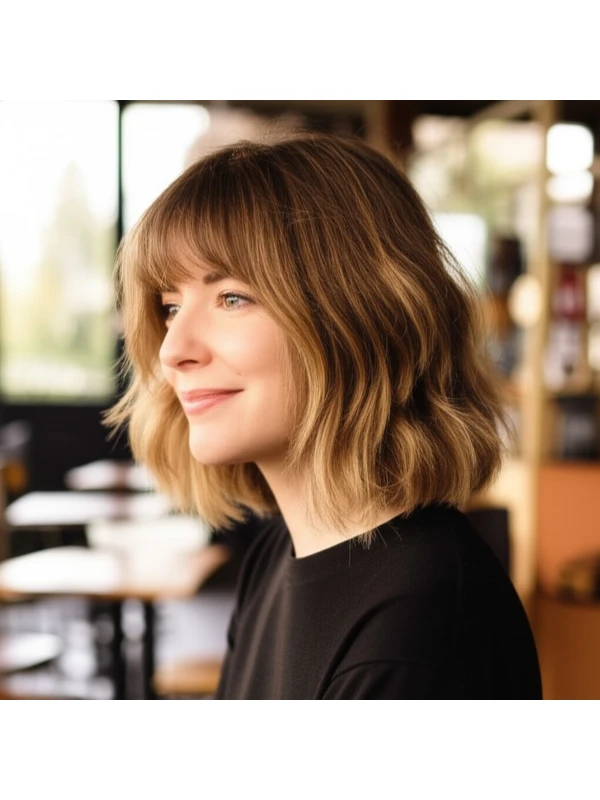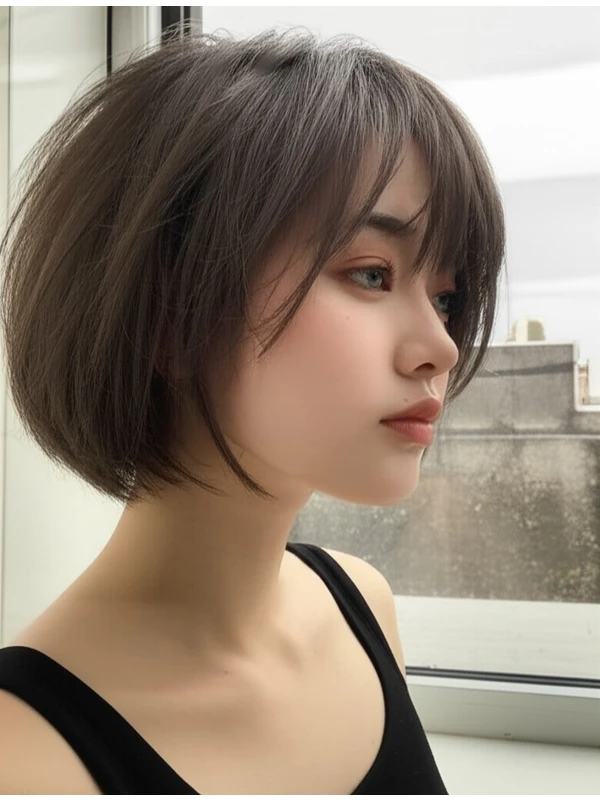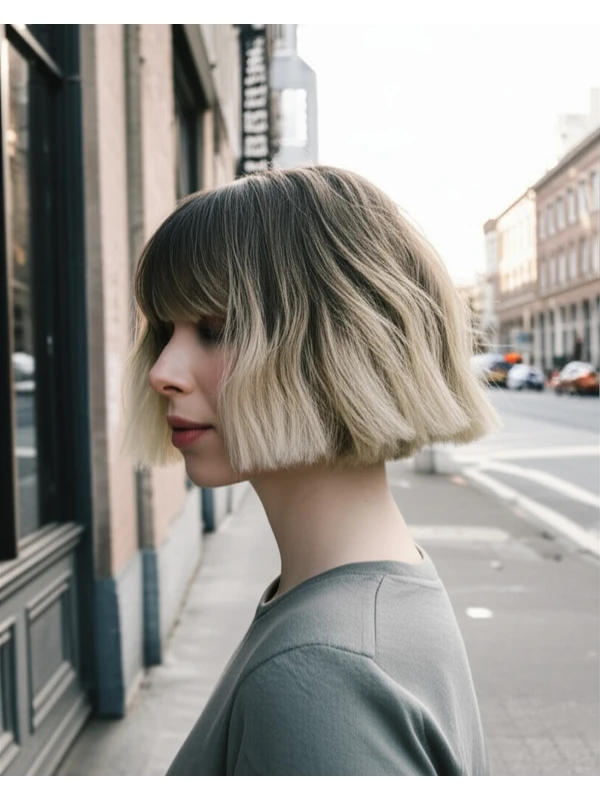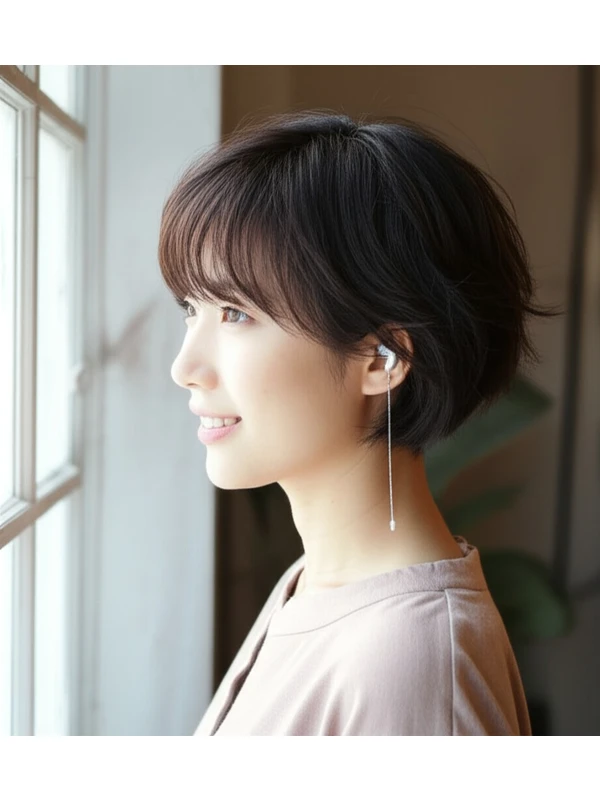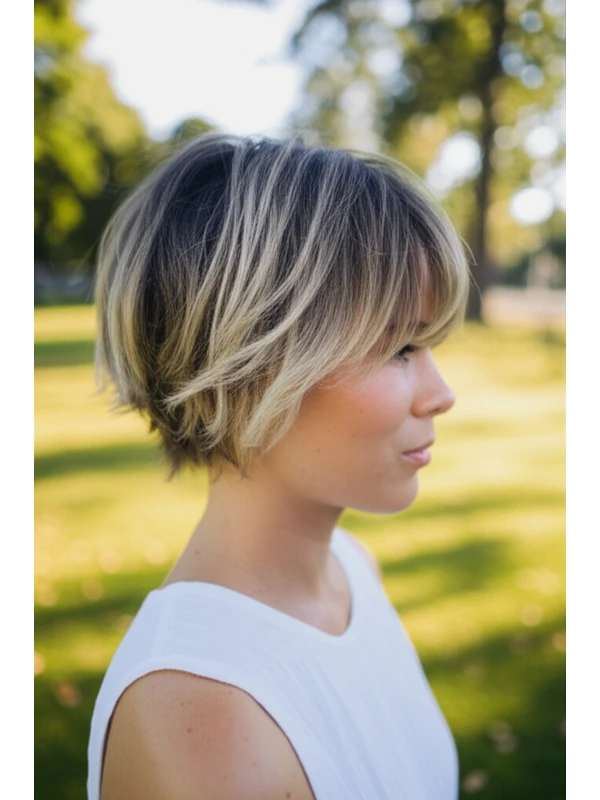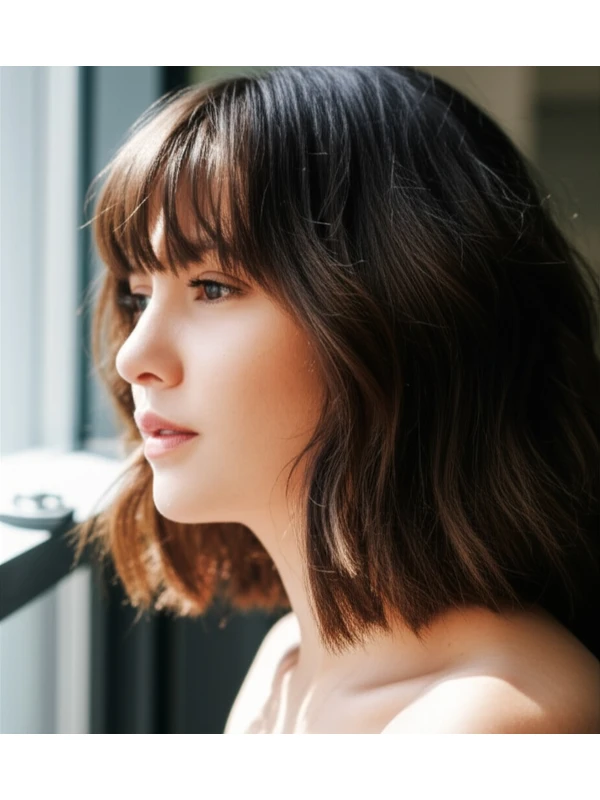#Layers with Curtain Bangs: A Guide to Effortless Style
This hairstyle is a modern classic – flattering on many face shapes and adaptable for various hair types. Let's break down everything you need to know about layers with curtain bangs, from the cut itself to how it looks on you.
#1) Background & Definition: What are Layers with Curtain Bangs?
Layers with curtain bangs involve a haircut where sections of your hair are cut shorter than others (layers), creating movement and volume. These layers frame the face, often softening features. The "curtain bangs" are key – they’re parted down the middle and gently sweep to either side, resembling drawn curtains.
- Cut Geometry: Layers can be subtle or dramatic; curtain bangs are usually soft and blended into the rest of the hair.
- Key Features: Face-framing layers, a center part (or slightly off-center), softly swept bangs that blend seamlessly with the rest of your hair.
- Typical Length Ranges: The overall length can range from collarbone to shoulder-length or longer. Bangs typically hit around the cheekbones or just below the chin.
- Alternative Names: Face-framing layers, soft layered cut, "effortless" style (often used in marketing!).
#2) Face Shape Fit: Finding Your Perfect Balance
The beauty of this style is its versatility, but understanding how it plays with your face shape is key to a truly flattering look.
- Oval: Lucky you! This style generally looks amazing on oval faces. The layers soften the features and curtain bangs enhance symmetry. Fringe Option: Longer, softer bangs that graze the cheekbones are ideal.
- Round: Layers add angles and definition to round faces. Avoid too much volume at the cheeks; opt for longer face-framing layers that draw the eye downwards. Curtain bangs can slim a round face if cut long enough. Fringe Option: Longer, side-swept curtain bangs or subtly shorter ones that blend into the layers are best.
- Square: Soften those angles! Layers with curtain bangs create fluidity and balance for square faces. The fringe softens the forehead. Fringe Option: A softer, more blended fringe is preferable to a blunt, heavy one.
- Heart: This style helps balance a wider forehead and narrower chin. Face-framing layers draw attention away from the widest part of your face. Fringe Option: Curtain bangs that are slightly longer on the sides can add symmetry.
- Diamond: Layers with curtain bangs soften diamond shapes by softening the angles of the cheekbones and jawline. Fringe Option: A medium-length fringe, blended well into the layers, works beautifully.
- Oblong (Long): This style adds width to a longer face shape. Shorter layers around the face help create more volume at the sides. Fringe Option: Curtain bangs that are slightly shorter and have a bit of texture will add visual width.
#3) Body Proportions & Height Guidance: Tailoring the Look
Your overall body proportions influence how this style looks.
- Petite: Shorter layers (collarbone length or above) prevent you from looking overwhelmed. Avoid overly long, heavy bangs that can drag down your face.
- Average Height: Most lengths and layer placements work well! Experiment with different bang lengths to find what suits you best.
- Tall: Longer layers (shoulder-length or longer) create balance and visual harmony. Curtain bangs can soften a taller frame.
- Narrow Shoulders: Face-framing layers add width at the shoulders, balancing your silhouette. Consider slightly more volume in the shoulder area.
- Broad Shoulders: Avoid excessive layering around the shoulders as it can accentuate their width. Focus on face-framing and top layers for balance.
- Short Neck: Shorter layers and bangs help elongate the neck visually.
- Long Neck: Longer layers and a slightly longer fringe can create the illusion of a shorter neck.
#4) Works Best With Hair Types & Densities: Finding Your Match
This style is adaptable, but understanding your hair type is crucial for achieving the desired result.
- Straight Hair: Layers add movement and volume that straight hair often lacks. Curtain bangs look sleek and polished.
- Wavy Hair: Layers enhance natural waves! The curtain bangs can be styled to blend seamlessly with the wave pattern. Shrinkage Tip: Account for shrinkage – layers will appear shorter when dry than they do wet.
- Curly/Coily Hair: Layers add shape and definition, preventing a triangular appearance. Curtain bangs require careful shaping and styling to avoid looking choppy or awkward. Shrinkage Tip: Curl patterns can shrink significantly (20-50%!), so communicate this with your stylist. Shorter layers are often necessary.
- Fine Hair: Layers create the illusion of volume, but be cautious about removing too much density. Curtain bangs can make fine hair look even thinner if cut too short or blunt.
- Medium Hair: This style is generally very flattering for medium-density hair.
- Thick Hair: Layers are essential to remove weight and add movement. Curtain bangs help thin out the face and soften features.
#5) Styling Variations: From Casual to Evening Glam
This cut is a chameleon! Here’s how to change it up:
- Sleek vs Textured: Use smoothing serums for a sleek, polished look or texturizing sprays for more volume and definition.
- Middle vs Side Part: A middle part emphasizes symmetry; a side part adds softness and asymmetry.
- Fringe Variations: Experiment with different lengths – longer bangs graze the cheekbones, shorter ones frame the eyes. You can also add subtle face-framing pieces within the fringe itself.
- Occasion Styling:
- Casual: Air dry with a texturizing product for an effortless vibe.
- Office: Blow-dry smooth and straight or create soft, controlled waves.
- Evening: Add volume at the roots using volumizing mousse and style into elegant curls or a sleek updo.
#6) Maintenance: Keeping Your Style Fresh
- Trim Cadence: Every 6-8 weeks to maintain shape and prevent split ends. More frequent trims (every 4-6 weeks) may be needed with shorter layers or bangs.
- At-Home Routine: Gentle shampoo and conditioner, a leave-in conditioner for moisture, and heat protectant if using hot tools.
- Heat vs Air Dry: Embrace air drying whenever possible to minimize damage. When blow-drying, use a medium heat setting.
- Product Checklist: Shampoo & Conditioner (for your hair type), Leave-In Conditioner, Heat Protectant (if applicable), Styling Cream/Mousse/Serum (depending on desired texture). Finishing Spray for hold.
- Estimated Daily Styling Time: 10-30 minutes, depending on styling complexity and hair type.
#7) Grow-Out Roadmap: The Evolution of Your Style
- Months 1-3: The layers are most defined; bangs maintain their shape well.
- Months 3-6: Layers start to blend together as they grow out. Bangs may need a trim to prevent them from getting too long or heavy. Consider slightly adjusting the layer placement with your stylist.
- Maintenance: Regular trims are key during this phase to ensure a seamless transition and avoid a boxy shape.
#8) Color Pairings: Enhancing Your Layers
- Cool Undertones (ash blonde, cool brown): Cool-toned colors enhance the softness of the layers and create a modern look.
- Warm Undertones (golden blonde, warm brunette): Warm tones add dimension and richness to the hair.
- Low-Commitment Options: Balayage or highlights can add depth and dimension without a drastic color change. Subtle face-framing highlights within the layers are particularly flattering.
#9) Season & Occasion Guide: Adapting Your Look
- Spring/Summer: Embrace lighter, brighter colors and looser styling for a fresh feel.
- Fall/Winter: Richer tones and more defined layers add warmth and sophistication. Consider adding texture with waves or curls.
- Work: Sleek and polished styles are ideal.
- Weddings/Parties: Experiment with updos or half-updos to showcase the face-framing layers.
- Formal Events: Elegant styling, such as soft curls or a smooth blowout, will complement the style beautifully.
#10) Cost & Time: What to Expect at the Salon
- Salon Time: Typically 1 - 2 hours. More complex cuts or color services may take longer.
- Estimated Price Range: Moderately priced – expect to pay more than a basic trim, but less than a highly specialized cut and color.
#11) Pros & Cons: Weighing the Options
Pros: Flattering on many face shapes, versatile styling options, adds movement and volume, relatively easy to maintain (with regular trims). Cons: Requires regular trims to maintain shape, can be time-consuming to style if you desire a specific look, may not work well with all hair textures without adjustments.
#12) Salon Consultation Script: Questions to Ask Your Stylist
- "I'm interested in layers with curtain bangs. Can you assess my face shape and recommend the best layer placement and fringe length?"
- “What type of layering would be most suitable for my hair texture (straight, wavy, curly/coily)?”
- "How can we account for shrinkage if I have curly or coily hair?"
- "Can you show me examples of this style on someone with similar hair and face shape to mine?"
- “What products do you recommend for styling and maintaining this cut?”
Disclaimer: This article provides general hairstyle advice. Individual results may vary. Consult a qualified hairstylist for personalized recommendations.
